Hello lovely Steemians !
For todays @botanicalgardentours I want to show to you the Wahingtonia Filifera, also known as the California Fan Palm.
Für die heutigen @botanicalgardentours möchte ich euch die Wahingtonia Filifera zeigen, die auch als Priesterpalme bekannt ist.
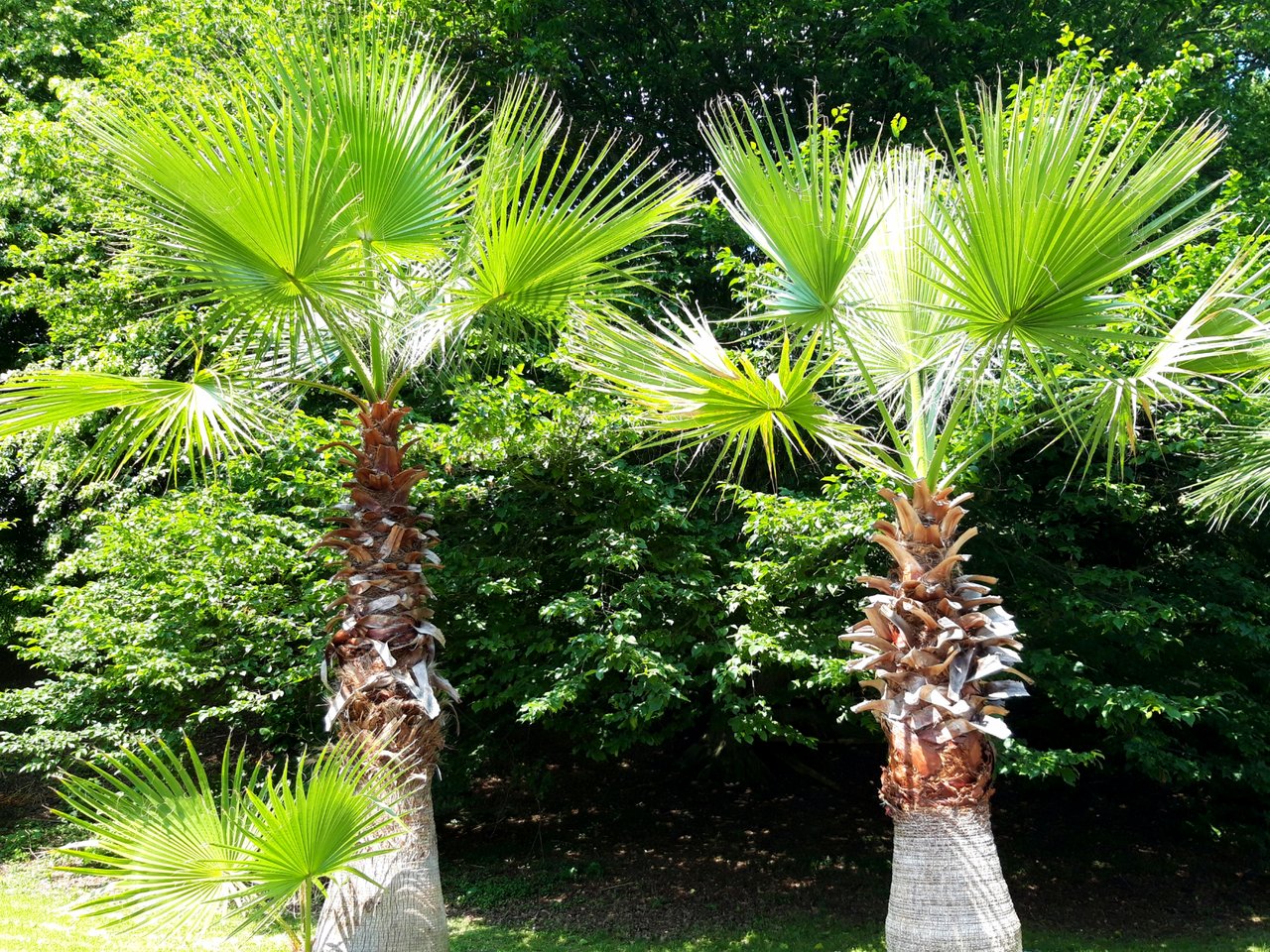
This palm is very similiar to the Chamaerops Humilis, the Mediterranean Dwarf Palm. But contrary to the Dwarf Palm this one is native to the region of California and West Arizona and not the Europa and northern Africa. The California Fan Palm is much bigger and can be up to 20 m in hight and 6 m broad. This palm tree can get 250 years old and be the habitat for generations of small bird families ;) .. you cand find the Dwarf Palm here :
@adalger/botanical-garden-tours-002-chamaerops-humilis-mediterranian-dwarf-palm-zwergpalme
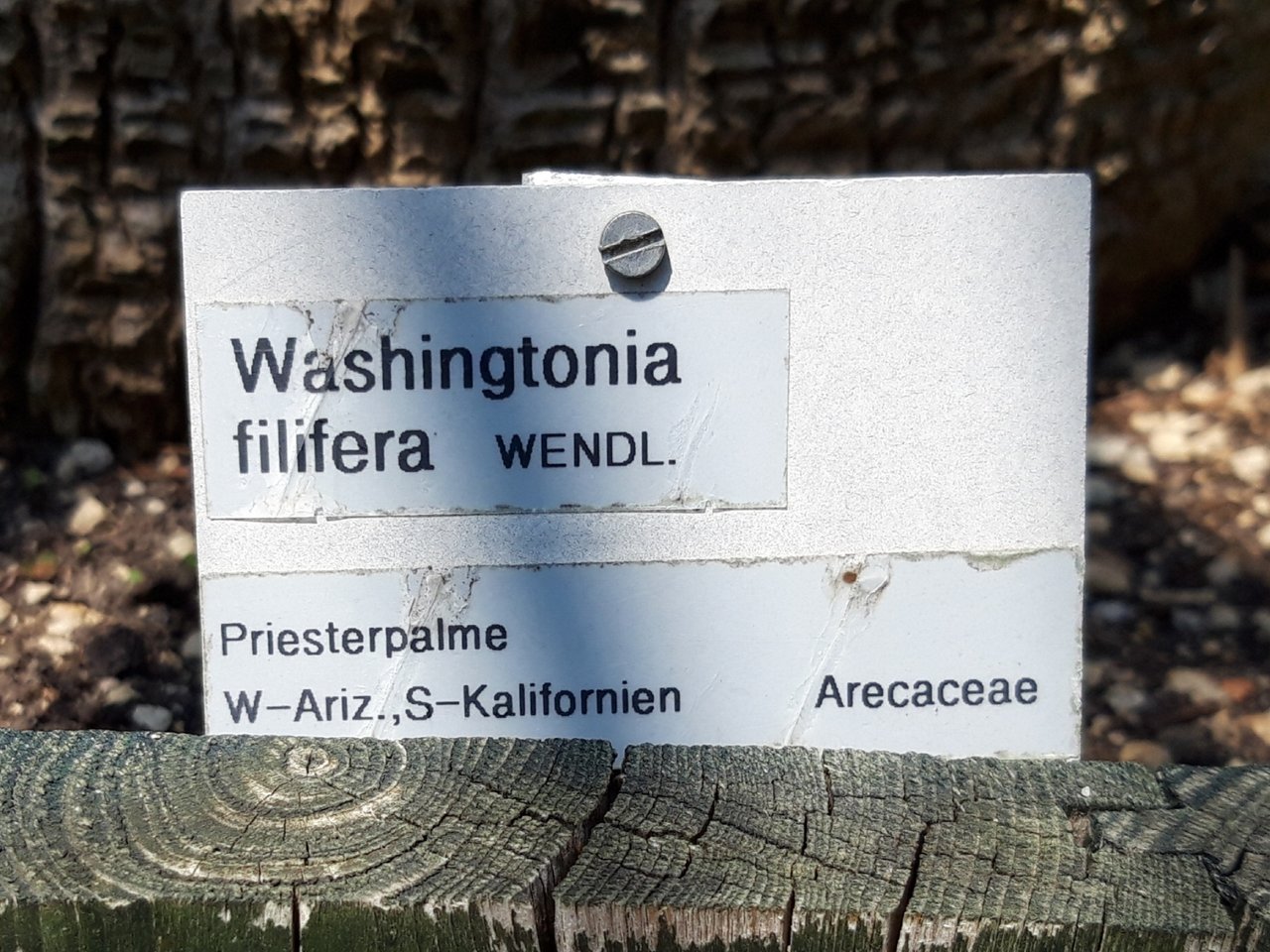
Diese Palme ist der Chamaerops Humilis, der Zwergpalme, sehr ähnlich. Aber im Gegensatz zur Zwergenpalme stammt diese aus der Region von Kalifornien und West-Arizona und nicht aus Europa und Nordafrika. Die Priesterpalme ist viel größer und kann bis zu 20 m hoch und 6 m breit werden. Sie kann 250 Jahre alt werden und bieter damit einen Lebensraum für ganze Generationen kleiner Vogelfamilien ;) .. Ihr findet die Zwergpalme im obrigen link.
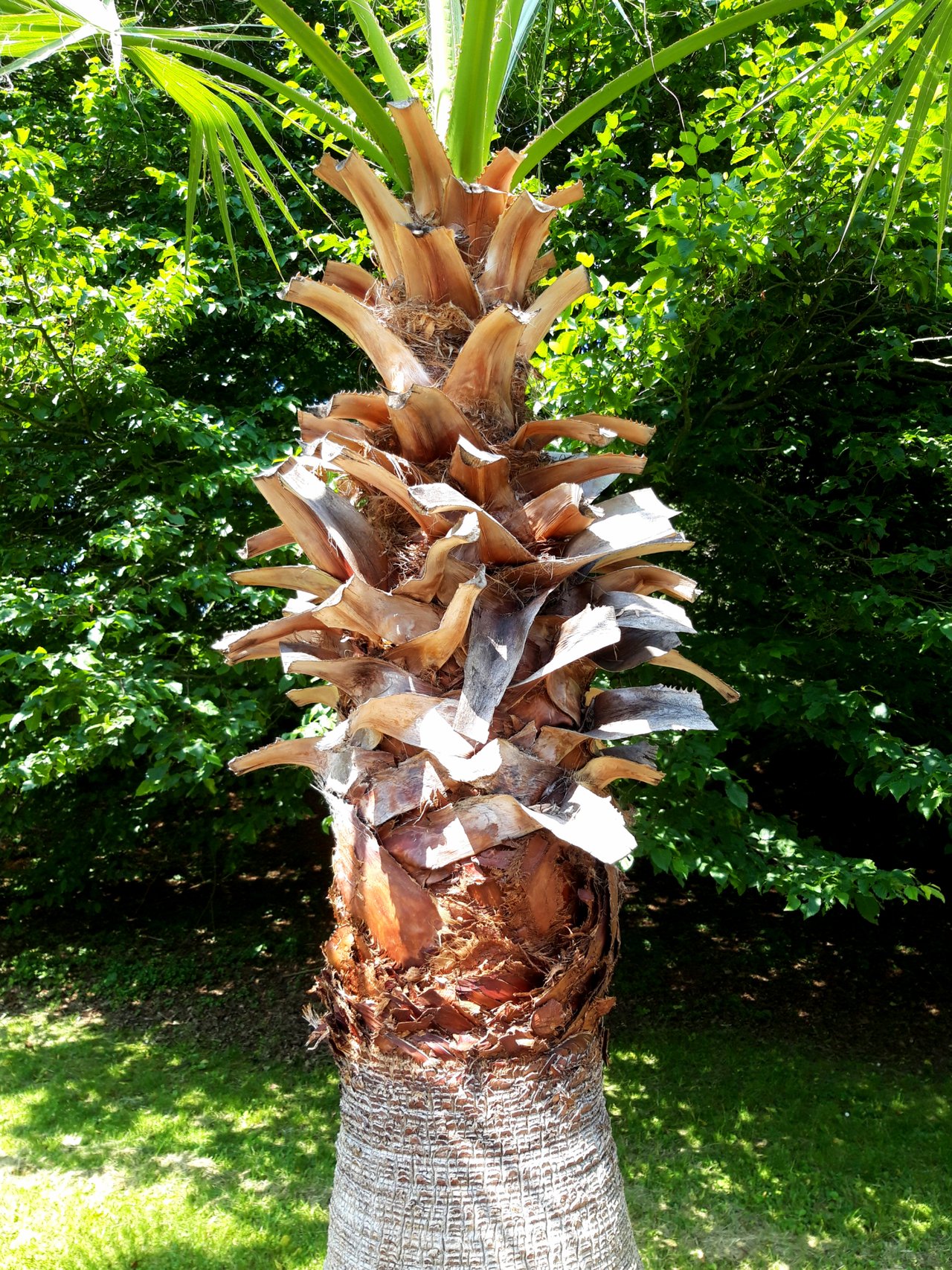
The California Fan Palm also posesses leaves that grow in groups of many single leavelets, but there are more and lonher ones then for the Dwarf Palm, up to 2.5 m. Also their stem is not completely covered by sharp spikes, but rather the upper part of the stem. They could also withstand lowere temperatures with minor damadge but prefer hotter temperatures. Thus they are one of the very very few winnerst of humankind induced climate change on the world.
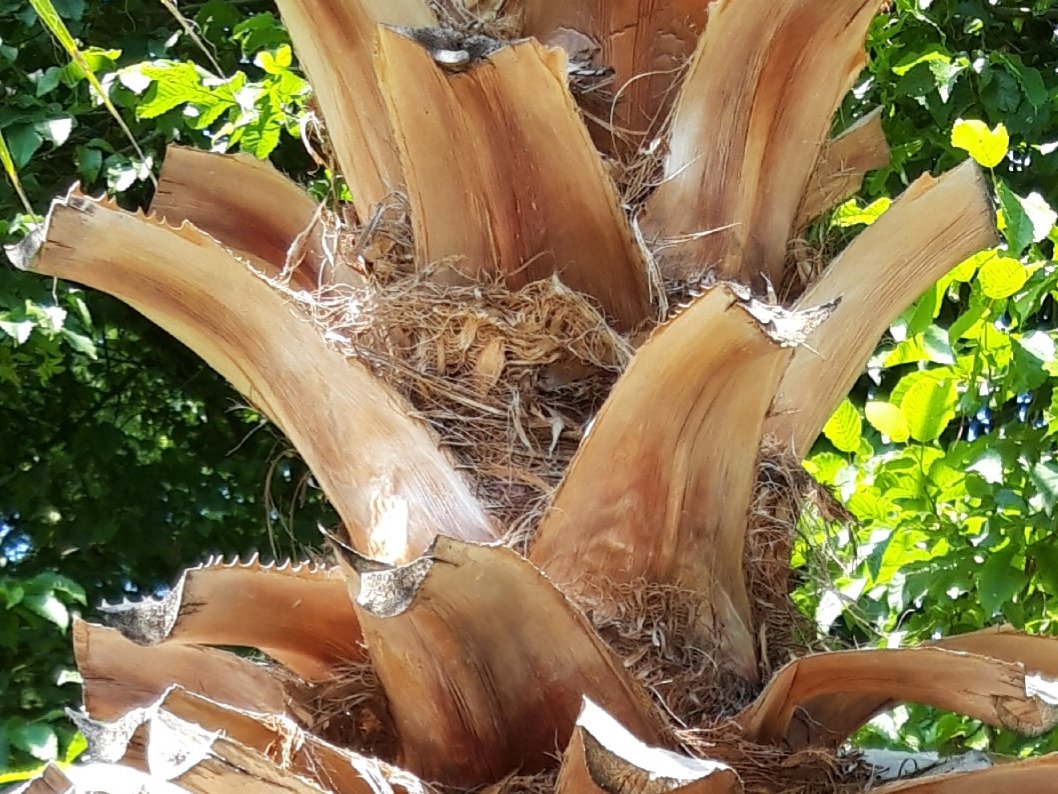
Die Pristerpalme besitzt auch Blätter, die in Gruppen von vielen Einzelblättern wachsen, aber es gibt mehr und längere Einzelblätter als für bei der Zwergpalme, bis zu 2.5 m. Auch ihr Stamm ist nicht vollständig von scharfen Stacheln bedeckt, sondern lediglich der obere Teil. Sie könnten ebenfalls niedrigen Temperaturen mit geringfügigen Schäden standhalten, bevorzugen jedoch heiße Temperaturen. Damit gehören sie zu den ganz wenigen Gewinnern des vom Menschen verursachten Klimawandels auf der Welt.
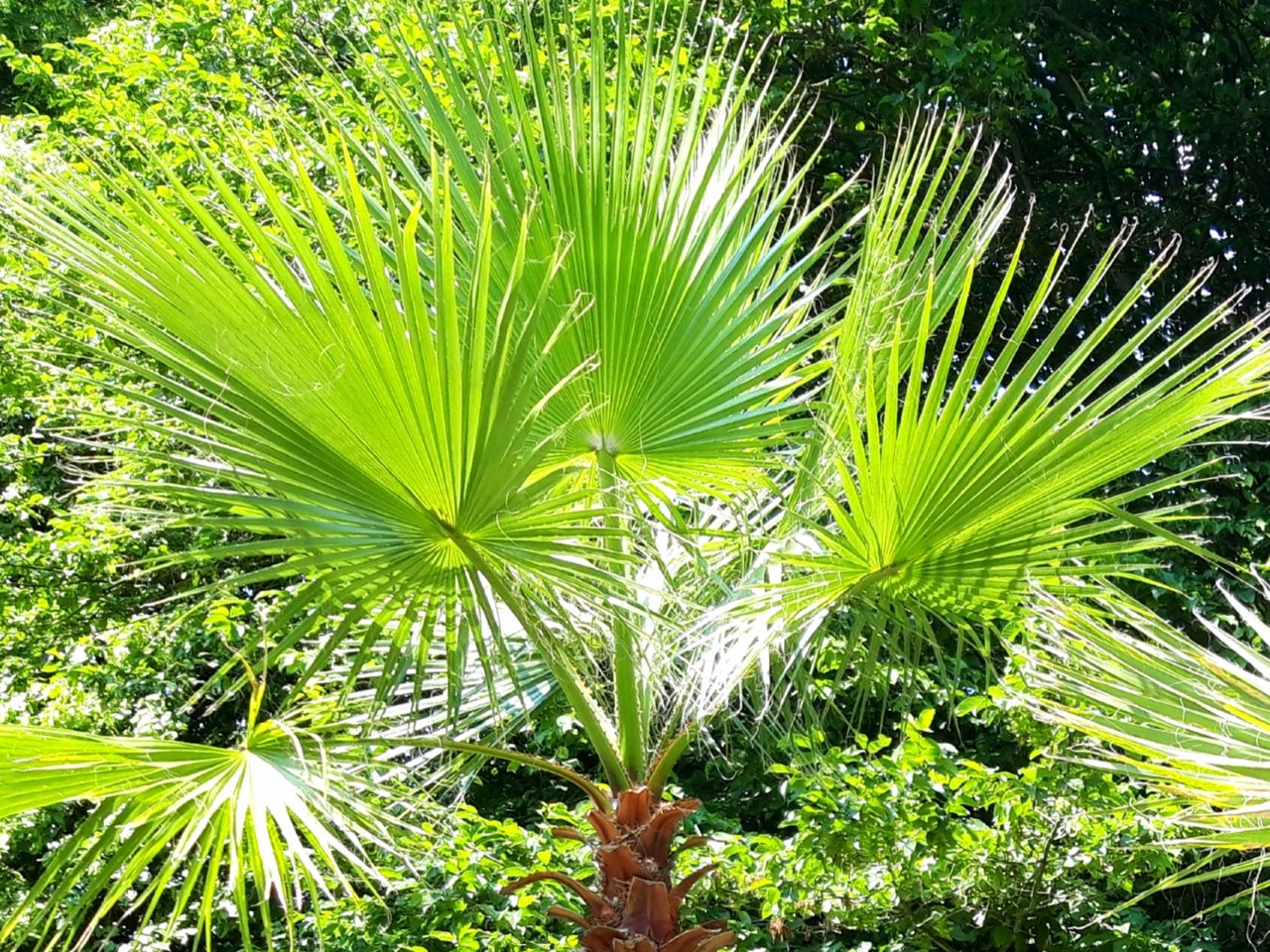
I hope that you like todays @botanicalgardentours about the Washingtonia Filifera. If you like it I would be happy about an upvote, comment or resteem .. and If you like to see more in the future feel free to follow me ;)
Ich hoffe, dass euch die heutige @botanicalgardentours über den Washingtonia Filifera gefallen. Wenn es euch gefällt würde ich mich über einen Upvote, einen Kommentar oder Resteem freuen. Und wenn ihr in Zukunft mehr sehen möchtet, dann könnt ihr mir gerne folgen ;)
Best wishes,
Adalger
